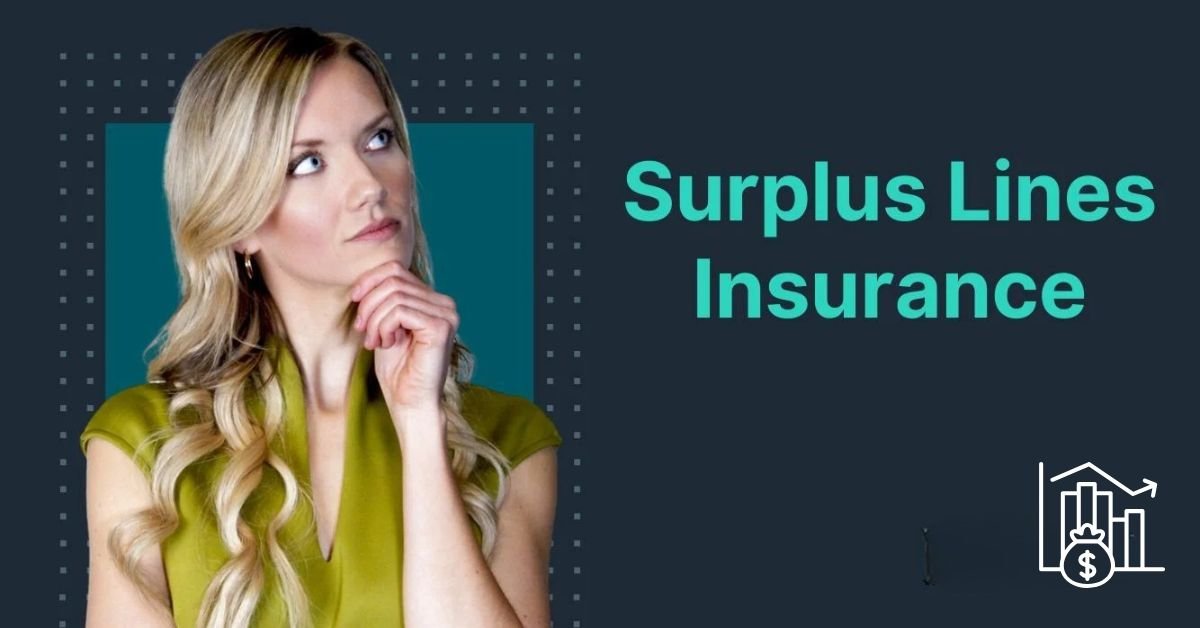Introduction
Surplus lines insurance plays a crucial role in covering risks that traditional insurers refuse to underwrite. However, policyholders often face additional fees, taxes, and surcharges, leading to confusion about “Are surplus lines insurance fees justified?“ or “Why do surplus lines policies cost more?”
In this article, we will dive deep into surplus lines insurance fees, how they are calculated, their legal aspects, and how they compare to standard insurance policies.

What is Surplus Lines Insurance?
Surplus lines insurance is a type of coverage for high-risk businesses and individuals who cannot obtain policies from admitted insurers in the standard market. These policies are provided by non-admitted insurers, meaning they are not licensed in the state where coverage is issued but are still legally permitted to sell insurance. Are Surplus Lines Insurance Fees.
Key Features of Surplus Lines Insurance:
- Covers high-risk businesses or individuals rejected by standard insurers.
- Issued by non-admitted insurers that operate outside state insurance regulations.
- Subject to special regulations and fees, including premium taxes, stamping fees, and broker fees.
- Typically offers customized and flexible coverage for unique risks.
Understanding Surplus Lines Insurance Fees
Surplus lines insurance comes with additional fees that differ from traditional insurance policies. These fees include:
1. Surplus Lines Premium Tax
One of the biggest cost factors in surplus lines insurance is the state-mandated premium tax, which varies by location. Most states charge between 3% and 6% on the premium amount.
🔹 Example: If your surplus lines policy premium is $10,000, and your state tax rate is 5%, you will pay an extra $500 as premium tax.
2. Stamping Fees
Many states impose a stamping fee to process and verify surplus lines transactions. This fee is usually 0.1% to 0.5% of the premium and ensures compliance with surplus lines regulations.
🔹 Example: If your policy premium is $50,000, and the stamping fee is 0.2%, you will pay $100 as a stamping fee.
3. Broker Fees
Since surplus lines insurance is arranged through specialized brokers, they charge additional broker fees to find the best policies for high-risk clients. Broker fees range from $50 to $500 or more, depending on policy complexity.
🔹 Example: If a broker charges $300 as a flat fee, you must pay this amount separately from your insurance premium.
4. Policy Servicing Fees
Some insurers impose servicing fees to cover administrative costs like policy issuance, endorsements, renewals, and policy modifications. These fees vary by provider and policy type.
5. Inspection Fees
In cases where an insurer requires an on-site inspection to assess risk, an inspection fee may be charged. This is more common in property-related policies.
🔹 Example: A commercial building requiring a risk inspection may incur a $200–$500 fee for assessment.

Why Do Surplus Lines Insurance Fees Exist?
Unlike admitted insurers, which are backed by state guarantee funds and follow strict pricing regulations, surplus lines insurers operate independently. As a result, surplus lines insurance fees exist for: Are Surplus Lines Insurance Fees.
✅ Regulatory Compliance: Taxes and fees ensure surplus lines policies adhere to legal requirements.
✅ Higher Risk Coverage: Non-admitted insurers take on risks that standard insurers reject.
✅ Specialized Underwriting: Policies are tailored to unique needs, requiring additional processing and expertise.
How to Minimize Surplus Lines Insurance Fees?
Although these fees are mandatory, you can take steps to reduce overall costs:
1. Compare Multiple Brokers
Since broker fees vary, work with multiple surplus lines brokers to find competitive pricing. Some brokers charge lower fees for the same coverage.
2. Understand State Regulations
Each state has different tax rates and fees. Understanding your state’s laws can help you anticipate costs and avoid hidden charges.
3. Opt for Higher Deductibles
Choosing a higher deductible can reduce your overall insurance premium, which in turn lowers the percentage-based taxes and fees.
4. Ask for Fee Transparency
Before purchasing a policy, request a detailed breakdown of all fees from your broker or insurer. This ensures you are not overpaying for unnecessary charges.
5. Consider Risk Mitigation Strategies
Improving safety measures in your business or property can reduce perceived risk, leading to lower insurance premiums and indirectly reducing tax-based fees.
Surplus Lines Insurance vs. Standard Insurance Fees
Many policyholders wonder: Are surplus lines insurance fees higher than regular insurance fees?
| Feature | Surplus Lines Insurance | Standard (Admitted) Insurance |
|---|---|---|
| Regulation & Licensing | Non-admitted insurers | State-licensed & regulated |
| Tax & Fees | Premium tax, broker fees, stamping fees, etc. | Lower or no additional fees |
| Risk Level | Covers high-risk businesses & individuals | Covers general risks |
| Policy Flexibility | Highly customized | Standard coverage options |
| Pricing Structure | May be more expensive due to unique risks | More regulated pricing |

🔹 Conclusion: Surplus lines insurance often carries more fees than standard insurance because it offers customized, high-risk coverage. However, policyholders benefit from greater flexibility and specialized protection that standard insurers do not provide. Are Surplus Lines Insurance Fees.
FAQs on Surplus Lines Insurance Fees
1. Are surplus lines insurance fees negotiable?
Some fees, like broker fees, may be negotiable. However, state taxes and stamping fees are mandatory and cannot be waived.
2. Do surplus lines insurers charge cancellation fees?
Yes, some insurers impose early cancellation fees if a policyholder terminates coverage before the policy term ends.
3. How do I check surplus lines tax rates in my state?
You can visit your state’s department of insurance website to check the current surplus lines tax rates and applicable fees.
4. Why are surplus lines policies more expensive?
Surplus lines policies are priced higher due to:
- Higher risk exposure
- No state-backed protection
- Custom underwriting processes
- Additional taxes and broker fees
5. Are surplus lines insurance fees the same in every state?
No, surplus lines fees vary by state. Some states have higher premium taxes, while others may charge additional regulatory fees. Are Surplus Lines Insurance Fees.
Final Thoughts
Surplus lines insurance fees are a necessary cost for securing high-risk coverage when standard insurers refuse to underwrite policies. While these fees may seem excessive, they are essential for regulatory compliance, risk management, and customized policy offerings. Are Surplus Lines Insurance Fees.
Key Takeaways:
✔️ Surplus lines insurance covers high-risk businesses and individuals.
✔️ Fees include premium tax, broker fees, stamping fees, and servicing fees.
✔️ Costs vary by state regulations, policy type, and insurer.
✔️ Policyholders can reduce costs by comparing brokers, increasing deductibles, and understanding state laws.
If you’re considering a surplus lines policy, ensure you understand all associated fees to make an informed financial decision. VISIT – puzoy.com
READ MORE –











